ntroduction
Organisms need material from outside in order to grow, develop and synthesize proteins and other substances needed by our body. For this, nutrition is important in our body. So, we can define nutrition as :
Nutrition Definition
It is the process of intake of food to produce energy required for various metabolic activities of the body.
There are two types of metabolic processes occurring in our body : Catabolic and Anabolic
Catabolic process
Catabolic processes include breakdown processes.
Anabolic process
Anabolic process means synthesis processes.
The food that we eat has nutrients in it which provide energy.
Types of nutrients
Different types of nutrients are :
- Carbohydrates
- Vitamins
- Proteins
- Fats
- Minerals
Types of nutrition
On the basis of how organisms obtain food, they are of two main types:
- Autotrophic nutrition
- Heterotrophic nutrition
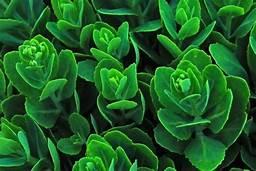
Autotrophic nutrition
It is a type of nutrition in which organisms can make its food with the help of Photosynthesis as they possess Chlorophyll. That is, they have the ability to convert solar energy into chemical energy for food, but this power is only in green plants and not animals or humans as they don’t have any photosynthetic pigment.
For example - In all green plants, the photosynthetic pigments are Chlorophyll, Carotenoids, Phycobilins, etc. Out of all, Chlorophyll a and Chlorophyll b are the best.
Heterotrophic nutrition
It is a type of nutrition in which organisms cannot make their own food as it lacks chlorophyll or any other photosynthetic pigments.
For example - all non green plants & animals
Classification of Heterotrophs
On the basis of how they obtain nutrition from autotrophs, hetrotrophes show different modes of obtaining food: either they act as Parasites, as Saprophytes or show Holozoic mode.
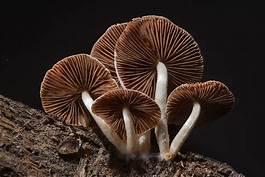
Saprophytes
Saprophytes are the organisms that feed on dead decaying matter. For example- fungi.
They secrete certain enzymes from their body surface that convert complex food into simple form and then they absorb it through general body surface.
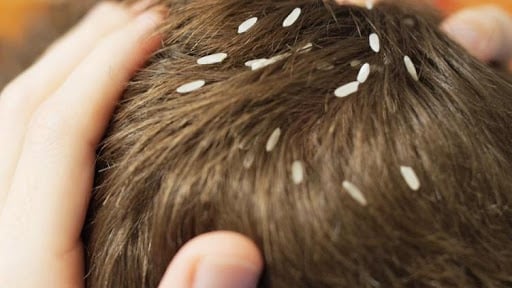
Parasites
Parasites are organisms that live in or on the surface of other organisms to fulfill their nutritional requirements. For example - lices in human head.
This relationship can be symbiotic or non symbiotic.Symbiotic Parasites
Symbiotic parasite is that in which both the partners are mutually benefited like e.coli in human intestine as it obtains its food from our body but in response, secretes certain minerals for our body.
For example - e.coli bacterium (parasite) in human intestine (host)
Holozoic mode
- They are organisms that follow five steps in sequence: ingestion, digestion, absorption, assimilation & egestion
For example: man
(Organism showing this mode can be Herbivorous, Carnivorous or Omnivorous)
Digestive System of man
Man is a heterotroph & has holozoic mode of nutrition. Digestive system of man is divided into two parts:
- Alimentary canal
- Associated glands
Alimentary Canal is a 9 metre long tube that starts from mouth and ends up at anus.
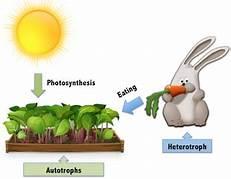
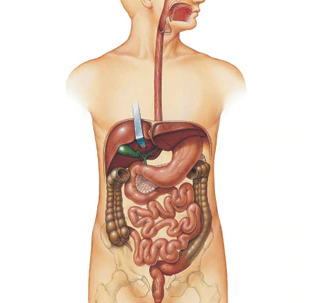
It has following organs in sequence:
- Parts of small intestine are Duodenum, Jejunum & Ileum
- Parts of large intestine are Caecum, Colon & Rectum
Associated glands
1) Salivary gland- Saliva containing starch is called Ptyalin (Serum Amylase).
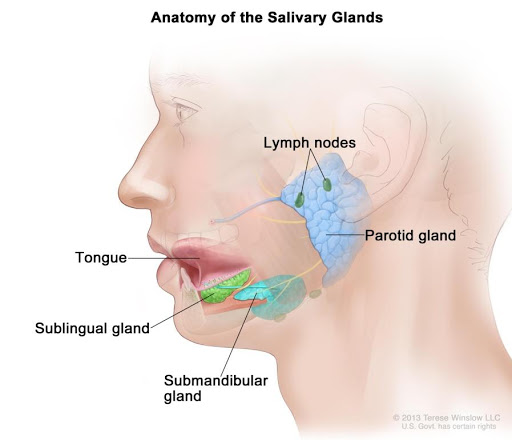
2) Gastric gland- They produce various gastric juices like:
- Mucus- It lines the stomach wall.
- Hydrochloric Acid- It provides an acidic medium.
- Pepsinogen- It helps convert proteins to Peptones.
- Renin- It helps to change milk to curd.
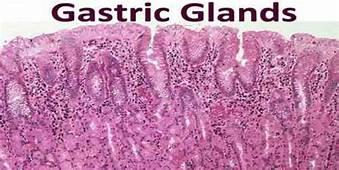
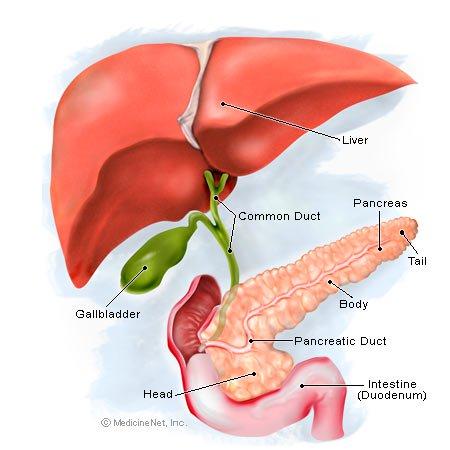
3) Pancreatic Gland- It produces pancreatic juices.
- Amylase- It helps in converting starch to maltose.
- Trypsin- It helps in converting Peptones to Peptides.
- Lipase- Helps in converting fats to fatty acid & glycerol.
4) Liver produces bile juices which help in digestion of fats.
5) Gland in Ileum prepares erepsin which helps in converting the following-
- Peptides to amino acid
- Lipase/ fat to fatty acid & glycerin
- Maltase/ maltose to glucose
- Lactase/ lactose to galactose
Physiology
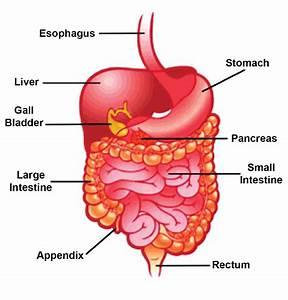
Ingestion: It is a process in which the food is taken in mouth and churned with the help of teeth.
Digestion: In the mouth, saliva is secreted through salivary gland that contains serum amylase which starts the digestion of starch. The masticated food is rolled into bolus and is swallowed. Then the food, from food pipe, by peristaltic movement passes into the stomach .
In Stomach: When the food goes in the stomach, gastric juices are secreted i.e.,
Mucus- That lines the stomach wall.
Hydrochloric Acid- That provides an acidic medium for Pepsin.
Pepsin- That converts proteins to Peptones.
Renin- That changes milk to curd.
Food remains in the stomach for about 3 hours and then is passed into the duodenum in the form of chyme.
- In Duodenum the bile juices, bicarbonates ions from liver & pancreatic juice from pancreas are secreted.
- Then the bile juice helps in emulsification of fats.
- The bicarbonates ions provide alkaline medium to pancreatic juices.
- The pancreatic juices help in converting amylase and starch into maltose.
- Also trypsin helps to convert peptones to peptides.
- Lipase also helps to convert fat into fatty acid & glycerol.
- Then the food passes from jejunum to ileum. In ileum intestinal juice is secreted that completes the digestion and converts food into soluble form i.e. amino acid, fatty acid & glucose..
- Absorption:In ileum there are small finger like projections called villi that increase the surface area for absorption. Absorbed food is passed into blood & through blood, diffuses into body cells.
- Assimilation:In body cells, energy is produced from absorbed food .
- Egestion:The undigested food passes through the large intestine & water absorption take place. This undigested food from caecum passes to colon and then to rectum where it forms faeces and is egested through anus.
Peptic Ulcer: It is a disorder when mucus membrane of stomach gets corroded due to which acid effect reaches stomach wall which leads to ulcers
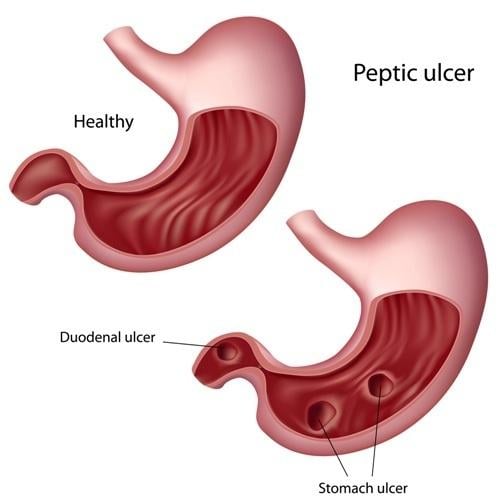
Photosynthesis
It is defined as the process of synthesis of food by green plants which takes place with the help of CO₂, H₂O, chlorophyll, in the presence of sunlight.

Raw materials required:
- Carbon dioxide which is taken by the plant from atmosphere through stomata.
- Water is taken by the plant from soil through roots.
- Sunlight which is taken by the plant from the sun.
- Chlorophyll, a green pigment that can trap solar energy and convert chemical energy into food. It is present in organelle called chloroplast. This organelle is in palisade cells of mesophyll tissue of leaf.
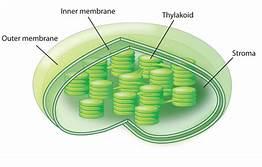
Mechanism of Photosynthesis
It is divided into two parts which are
- Light reaction
- Dark reaction
Light reaction: It takes place in grana in the presence of light. It involves:
Photolysis of water - This is done for the breakdown of water into its components in presence of light.
H₂O | H₂ | + | ? O2 | + | 2 e’s |
Formation of reduced form of NADP
NADP | + | H₂ | NADPH₂ |
Formation of energy source ATP:
ADP | + | Pi | + | Free energy | ATP | + | H2O |
-
Dark reaction: It takes place in absence of light.This reaction is also called Calvin Benson cycle.
In this CO₂ reacts with 2 molecules of NADP and 3 molecules of ATP in the presence of bio-catalyst RUBP to form food in the form of glucose.
CO₂ | + | NADPH | + | ATP | + | RUBP | CHO | + | ADP | + | NADP | + | RUBP |
Use of RUBP: It is used as a biocatalyst i.e. increases the rate of reaction without undergoing any change in itself.
Factors affecting the process:
- light: Increases with increase in light intensity until CO2 becomes limiting.(blue & red light are more effective)
- CO2: Increases with increase in the concentration of CO2 but up to a certain level.
- H2O: Decreases with decrease in water content
- Temperature: Decreases with decrease in temperature as enzyme activity also decreases.(very high temperature lowers photosynthesis)
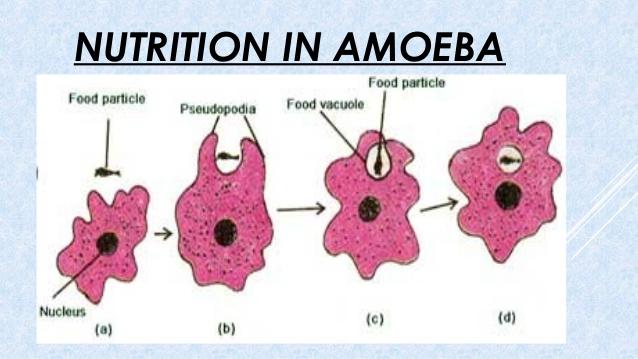
Nutrition in Amoeba
Amoeba also shows heterotrophic mode of nutrition .
(a) Ingestion: Firstly, amoeba localizes the food and then, to engulf the food, it makes a cup shaped structure (pseudopodia or false feet) around itself and then in the form of a food vacuole it engulfs it.
(b) Digestion: In the food vacuole certain enzymes are secreted that convert complex food materials into simple ones.
(c) Absorption and Assimilation: The digested food is absorbed and is spread in cytoplasm from where it is utilized to produce energy.
(d) Egestion: The leftover remains move near the cell membrane. Then the cell membrane ruptures and the food is thrown out and then again membrane is formed .
Part 2- Respiration
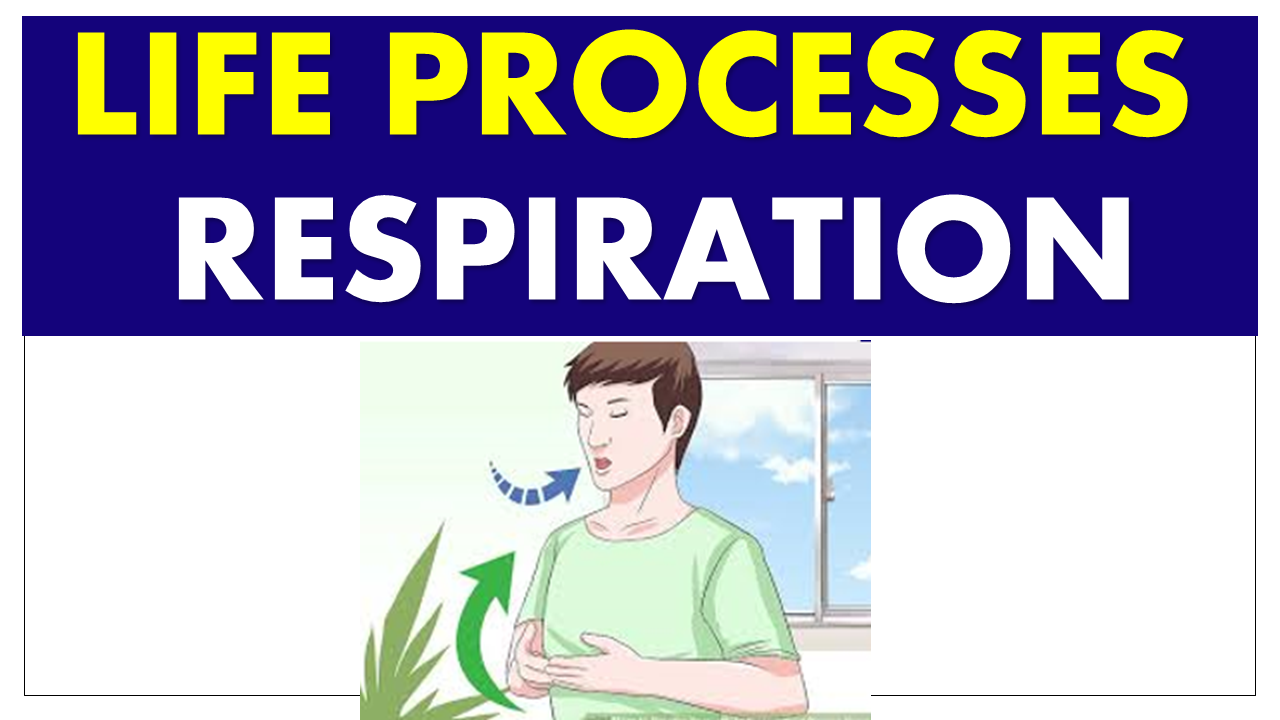
Respiration Introduction
As we all know for survival of any living organism breathing is very important. Not only us every living creature needs to breathe. For this we intake oxygen and give out carbon dioxide. It is essential for us as we know in our body there is absorbed food and in order to get energy we need to break it and for breaking it we need oxygen that is why we need to take oxygen inside and that we can do only by breathing .But many a time we use breathing and respiration in the same manner but actually it is not like that. There is a lot of difference between the meaning of breathing and respiration. Let us see how they differ.
Difference between breathing and respiration
Life Processes Class 10 - Breathing and Respiration are different in many aspects from each other:-
| Breathing | Respiration |
It is simply exchange of gases i.e. taking in o2 & giving out co2. | It is intake of o2, using it for oxidation of food & giving out co2. |
It is a physical process. | It is biochemical process. |
There is no energy produced in this. | There is energy produced in this process. |
No enzymes are involved. | Enzymes are involved. |
It is not a cellular process. | It is a cellular process. |
So we conclude that breathing is a sub-part of respiration as it is not concerned with energy production whereas respiration is a wide concept as it includes all the activities like energy production, carbon dioxide production and obviously its removal. Breathing is actually a sub part of it. So now we can define respiration as intake of oxygen, breaking down of food to produce energy and giving out carbon dioxide. Different types of respiration are:
- Aerobic
- Anaerobic
Aerobic respiration
In this process the respiration takes place in the presence of O2 or oxygen.
For Example : Man
Glucose → Pyruvic acid→ 38 atp + co2 + h2o
In our body cells food is absorbed and to release energy, it needs to be broken down which is done with the help of oxygen that we take in. The food is in the form of glucose which gets converted into pyruvic acid in the cytoplasm of the cell. This process is oxygen independent and is termed as glycolysis.
Then this pyruvic acid, in the presence of oxygen gets converted into energy, carbon dioxide and water vapour. The energy in our body is in chemical form that is ATP(Adenosine TriPhosphate). This conversion of pyruvic acid into energy is called kreb cycle and it occurs in Mitochondria that is the reason why Mitochondria is called the powerhouse of the cell.
In this aerobic respiration we get 38 molecules of ATP when 1 molecule of glucose is oxidized. Those organisms that carry out this type of respiration are called aerobes .
Anaerobic respiration
It takes place in absence of o2.
For example: Some bacteria.
In this, the absorbed food that is glucose is converted into pyruvic acid and it is known as glycolysis and it is also an oxygen independent process. After this the pyruvic acid in the absence of oxygen gets converted into some chemical compound depending upon where this anaerobic respiration is taking place. Along with it carbon dioxide, energy and water vapour are formed as by products. In it 1 molecule of glucose breaks down to form 2 ATP molecules and other by products .
This anaerobic respiration is seen in case of microorganisms helping in breweries for the production of component of hard drinks that is ethanol. In this the chemical compound formed as a result of this respiration is ethanol that is the main constituent of hard drinks .
Glucose → Pyruvic acid → Ethanol + 2 ATP + H2O (fermentation)
Likewise when we are exercising, our energy requirement rises but due to shortage of oxygen supply our muscles start respiring anaerobically and the chemical compound formed is lactic acid. The fate of this lactic acid is that it is sent to the liver where it is stored .
Glucose → pyruvic acid → Lactic acid + 2ATP + H2O (our muscles)
Part 3- Transportation

Introduction
In our body, transporting system is as essential as food, hormones, gases, etc. For this, we need to have some system that can transport these things from one part of the body to other parts.
There are two circulatory systems:
- Blood circulatory system
- Lymphatic system
Blood Circulatory System
In this system the fluid that transports substances is blood. Let us know about blood first. Blood is formed of two components :-
- Plasma
- Blood cells
Plasma
It is a yellow coloured fluid that is 90% water and rest 10% is organic and inorganic substances like nutrients, gases, hormones, etc. That is the reason plasma acts as a nutritive medium for blood cells. Types of blood cells are:
- Red blood cells
- White blood cells
- Platelets
Red blood cells
They are the cells that have a disc like shape. These are incomplete cells with no nucleus, mitochondria and endoplasmic reticulum. These cells are the smallest cells of our body. These cells have a red colour pigment made up of iron called hemoglobin. The function of haemoglobin is to transport gases by forming complexes i.e oxyhb and carbinohb. These cells are synthesized in the bone marrow of adults and in infants they are synthesized in the spleen from stem cells. The lifespan of these cells is 120 days. These cells are also known as erythrocytes.
White blood cells
These cells are irregular in shape and are complete cells enclosing all organelles. These cells do not have any pigment in them and that is the reason they have no colour. These cells have a lifespan of about 2 to 4 weeks. They are also called as leukocytes. They are also called as soldiers of our body as they protect our body from infection causing agents. Either they engulf infection causing agent or they secrete certain proteins that make infection causing agent harmless.
Platelets
They are tiny fragments that may or may not have a nucleus. Their function is to secrete certain proteins that helps in blood clotting. Their life span is 60 to 120 days. They are also called thrombocytes.
Blood Clotting
We have seen many a time that our vessel gets punctured due to one or more reasons and bleeding starts but with time the bleeding stops also. It occurs through the process of blood clotting .
It is defined as the transformation of liquid state of blood into jelly like state on exposure to air. Mechanisms:
a) Injury + platelets → Thromboplastin (inactive enzyme)
b) Prothrombin → Thrombin (active enzyme)
c) Fibrinogen → Fibrin
d) Fibrin + rbc → Blood clot
in beginning this clot is soft in nature then in few seconds it turns into hard clod and then a yellow colored fluid is secreted called serum which is plasma without fibrinogen.
the whole process takes 2 to 3 minutes.
Some important terms
Antigens: They are infection causing agents that can harm the body.
Antibodies: They are the proteins synthesized in our body that fight against antigens and make them harmless.
Blood groups
We have noticed that we have different blood groups. Even in the same family you get to see different blood groups. So let us study first the types and then we will study about its reason.
There are four major types of blood groups:
blood group | antigen | antibody |
a | a | b |
b | b | a |
ab | a, b | - |
o | none | all |
Blood transfusion
It is the process of who can receive blood from whom and who can donate to whom. It is the process of transfer of blood from a healthy person to a sick person. The one who donates is the donor and the one who receives is the recipient.
When blood is to be transfused, some special precautions are to be taken. These precautions are given below:
- The blood groups must be same
- The blood should be disease free
- If the two things are verified, still for precaution sake, a compatibility test is carried out:
- Take a drop of donor's blood on a slide, then add a drop of recipient's blood to it. Leave it undisturbed for some time. Then observe it under the microscope. If clusters of red blood cells are seen, then blood is in-compatible and if clusters of red blood cells are not seen then blood is compatible.
Blood compatibility
Blood group AB is universal recipient as it has no antibodies.
Blood group O is the universal donor as it has all antibodies.
Rhesus factor
It is an antigen that may be present in our blood. The blood that carries the antigen is rh+ve and the other which does not possess is rh-ve. The blood that is +ve is compatible with it and for others it is a harmful antigen. Heart is a muscular walled organ that pumps blood to all the body parts. It is just like a clenched fist.It is roughly divided into two sides. The vessels that are associated with heart are:
Heart
Arteries- These are vessels that are thick walled and carry pure blood from the heart to all parts of the body.
Veins- These are thin walled vessels that carry impure blood from all body parts to the heart.
Capillaries- These are very thin walled vessels that are actually junctions between arteries and veins through which the exchange of substances occur.
- left side- deals with pure blood
- right side- deals with impure blood
The outer-covering of heart is pericardium and in heart special type of muscles are present that are non fatigue called cardiac muscle.
The heart is divided into 4 chambers:
- 2 atrium
- 2 ventricles
The two atria are separated by inter auricular septum and two ventricles are separated by inter ventricular septum and auricle and ventricle by an inter a-v septum. In right atrium a cup shaped structure called s-a node (sinu-auricular) is present whose function is to generate electric impulses in the heart. The pure blood through the pulmonary vein flows from lungs to left auricle, as the volume of blood increases, pressure increases in left auricle. Due to this a-v septum valves open and blood flows from left auricle to left ventricle. As volume of blood increases in left ventricle, pressure increases. Due to this a-v septum valves close and semilunar of aorta opens. This blood flows into
Aorta → Arteries → Capillaries.
Through capillaries the exchange of substances occur an| now in capillaries, the impure blood is transferred from small veins to the bigger veins.
The three bigger veins are formed:
1.superior vena-cava
2.inferior vena –cava
3 posterior vena cava
All these veins unite to form a common vein that opens up into the right atrium. The blood flows into the right atrium, volume increases pressure increases. then a-v septum valves open and blood flows into the right ventricle. then, by pulmonary artery, it is carried to the lungs for oxygenation. As we know that blood flows twice through heart therefore the circulation it is called “double circulation.”
ECG (Electro Cardio Graph)
It is an instrument used to record electric impulses generated in the heart. In it the ecg machine is used to which electrodes are attached. These electrodes are further attached to the chest of the patient by fixing a gel. Then the patient is said to relax. The impulses are recorded and they appear on a sheet of paper in the form of graph called electrocardiogram.
Blood Pressure
It is the pressure that blood exerts on the walls of the vessel. It is measured by an instrument called a sphygmomanometer. The blood pressure is more in arteries than in veins. There are two types of pressures:
1.systolic (pressure generated due to contraction).
2.diastolic pressure (pressure generated due to relaxation).
The normal blood pressure is 120/80 mm of mercury. High blood pressure is called hypertension.
Lymphatic system
The fluid in it that transports substances is lymph. This system consists of the following:
1. Lymph vessels
2. Lymph capillaries
3. Lymph
The lymph capillaries are present all over in the blood like blood capillaries but they are blunt from one end. These capillaries unite together to form lymph vessels. In lymph vessels, at certain places, lymph nodes are present which consist of lymphocytes that function like white blood cells. In these vessels the lymph fluid flows.
The functions of lymph are:
1. It carries digested and absorbed fat from the intestine.
2. It drains the excess fluid from the extracellular space back into the blood.
Transportation in plants
In plants also transportation is required but not that complicated. Transportation is important but is not too complex. For this transportation two systems are present in the plants:
1. Xylem
2.Phloem
These are also known as vascular bundles. Xylem helps in the transportation of water and minerals whereas the phloem helps in translocation. Xylem is made up of four kinds of cells. it is formed of the following 4 cells:
- Tracheid
- Vessels
- Parenchyma
- Xylem fibres
Out of all, only parenchyma is living and all the other components are dead. Let us study all the components:
1) Xylem vessels : These are formed of the dead cells joined end to end forming a long tube. These tubes have open ends. It is made up of lignin. It has certain pits where lignin is absent.
2) Tracheids: They are spindle shaped vessels with closed ends having pits in them.
3) Parenchyma: They are the living cells with nucleus.
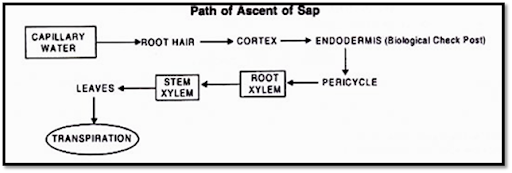
Transportation of water in plants
Ascent of sap is the continuous channel formed for the transportation of water and minerals from roots to aerial parts of plant. The factor that is responsible is “transpiration pull”. As the stomatal pores open, water starts transpiring due to which they withdraw water from epidermal cells which further withdraw from underlying cells. Ultimately, the hydrostatic pressure of xylem vessel of the leafs fall. But the hydrostatic pressure is still high in xylem vessels of root so the water starts moving from xylem vessel of root to vessel of leaf now the pressure in x. Vessel of root falls. Therefore, they withdraw water from underlying cells.
Part 4- Excretion
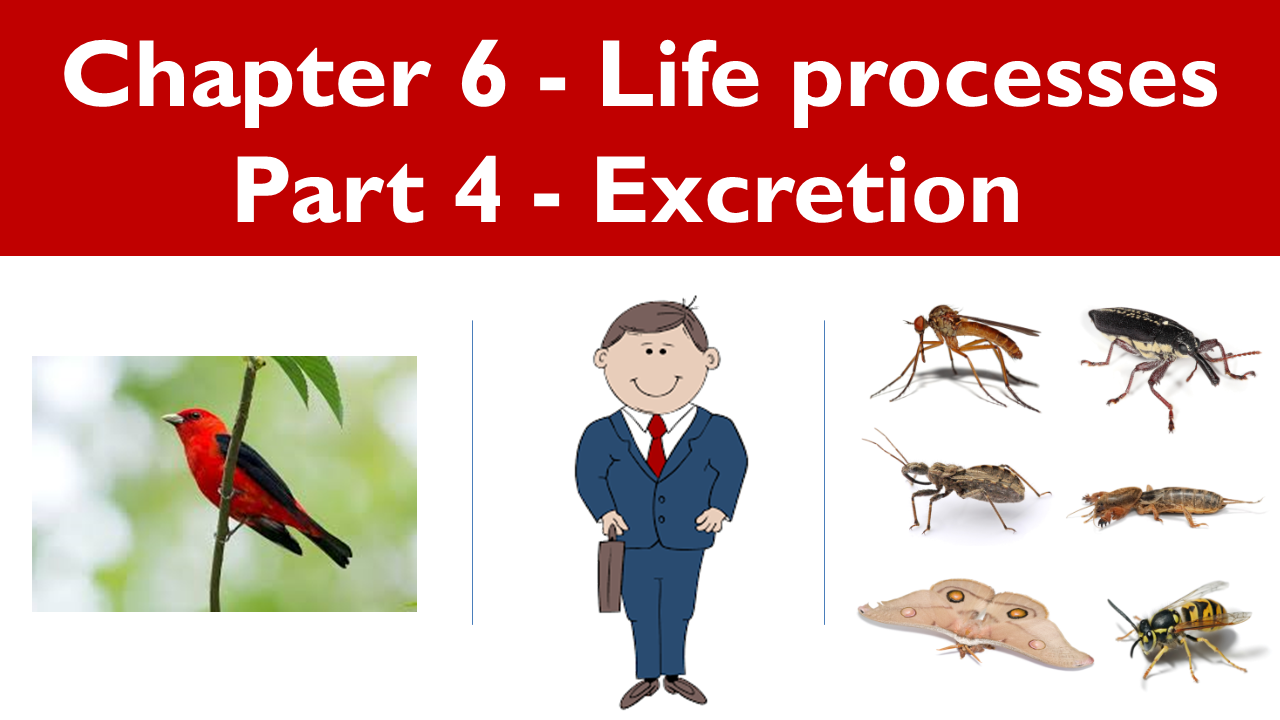
Definition of excretion
It is defined as “the removal of nitrogenous waste from the body.” Nitrogenous waste can be
Urea (ureotelic) e.g. man
Uric acid (uricotelic) e.g. birds
Ammonia (ammonotelic) e.g. insects
Excretory system of man
Excretory system of a man consists of a pair of kidneys, ureters, urinary bladder and urethras. Kidneys are bean shaped and located just above the waist. Nephron are structural and functional unit of kidneys i.e. kidney is formed of cells called nephrons. Urine formation is broadly divided into three steps:-
- Filtration
- Reabsorption
- Collection
Filtration- The blood flows through the glomerulus under great pressure which is because efferent arteriole is narrow. All the substances useful and non useful present in blood is filtered and enter from glomerulus into bowman's capsule through pores.called fenestrae. Then this substance passes from bowman’s capsule to pct and finally reaches loop of henle. Capillary blood that is left is regarded as a waste product. Water absorption take place in this region. Therefore water and waste product forms urine.
Collection: The urine then pass from distal convoluted tubule. Small convoluted tubule forms bigger collecting tubule. Finally they pour their secretion into renal pyramids. Urine from renal pyramids goes into ureter. Through ureter, urine reaches urine bladder where urine is stored temporarily & is excreted out through the urethra. The process of urine out of the urethra is called urination. Function of Henle’s loop is to concentrate the urine.
Renal failure
Renal failure can occur due to many reasons like:
- Accident or injury
- Disease etc.
So either transplantation is done or person is put on artificial kidney i.e.on dialysis. Dialysis is a process of separating small molecules from large ones using semi-permeable membrane. it is also called haemo-dialysis.
Dialysis machine consists of cellulose tubes and has dialysing solution filled in chamber. Blood from renal artery passes from cellulose tube, impure substances diffuse out into dialysing solution, & pure substances diffuse into blood. Hence, blood gets purified and is put back into renal vein.
Osmoregulation
It is the process of maintaining water and ionic balance in the body. Osmo receptors are the cells present in blood that are sensitive to alteration. Any alteration makes osmo receptors active and they generate an impulse to the brain. Brain analyses, interprets & sends message to prostaglandin. Prostaglandin in response secrete antidiuretic hormone. Antidiuretic hormone diffuses into blood and via blood reaches the kidney where it acts on loop of henle of nephron. If water content is high, then antidiuretic hormone makes the loop of henle more permeable to water. So that more under is removed from the body and urine will be diluted in that case. If water content is low, then antidiuretic hormone makes loops of henle less permeable to water so that more & more water is retained, thereby the urine is concentrated. Some waste products are stored in leaves & bark and are removed as they shed. Raphides are the spine like structure that store excretory products of certain plants, fruit, vegetables like yam (jimikand).
Life Processes NCERT Book Solutions
Q. Choose the correct option
1. The kidneys in human beings are a part of the system for
(a) nutrition.
(b) respiration.
(c) excretion.
(d) transportation.
Ans : (c) excretion
2. The xylem in plants are responsible for
(a) transport of water.
(b) transport of food.
(c) transport of amino acids.
(d) transport of oxygen.
Ans : (a) transport of water.
3. The autotrophic mode of nutrition requires
(a) carbon dioxide and water.
(b) chlorophyll.
(c) sunlight.
(d) all of the above.
Ans : (d) all of the above
4. The breakdown of pyruvate to give carbon dioxide, water and energy takes place in
(a) cytoplasm.
(b) mitochondria.
(c) chloroplast.
(d) nucleus.
Ans : (b) Mitochondria
Q5. How are fats digested in our bodies? Where does this process take place?
Ans: Fats are emulsified by bile juice and then converted into fatty acids and glycerol by lipase of pancreas and intestinal juice. It occurs in the small intestine.
Q6. What is the role of saliva in the digestion of food?
Ans: It helps in the lubrication and mastication of food.
Q7. What are the necessary conditions for autotrophic nutrition and what are its byproducts?
Ans: The necessary conditions for autotrophic nutrition are-
1. Carbon dioxide 2. Light 3. Water 4. Chlorophyll
The bi products are food in the form of glucose and oxygen gas.
Q8. What are the differences between aerobic and anaerobic respiration? Name some organisms that use the anaerobic mode of respiration.
Ans :
9. How are the alveoli designed to maximise the exchange of gases?
Ans : Alveoli are surrounded by tuft of capillaries and moreover, they have balloon like structure to maximize the exchange of energy.
10. What would be the consequences of a deficiency of haemoglobin in our bodies?
Ans : Deficiency of haemoglobin can lead to Anemia.
11. Describe double circulation of blood in human beings. Why is it necessary?
Ans : The pure blood through the pulmonary vein flows from lungs to left auricle, as the volume of blood increases, pressure increases in left auricle. Due to this, A-V septum valves open and blood flows from left auricle to left ventricle. As volume of blood increases in left ventricle, pressure increases. Due to this A-V septum valves close and semilunar of aorta opens. This blood flows into
aorta → arteries → capillaries.
Through capillaries exchange of substances occur and now in capillaries, the impure blood is transferred into small veins → bigger veins.
The three bigger veins are formed
1. Superior vena-cava
2. Vena –cava
3. Posterior vena cava
All these veins unite to form a common vein that opens up into the right atrium. The blood flows into the right atrium, volume increases and the pressure increases. Then A-V septum valves open and blood flows into the right ventricle.Then, by pulmonary artery, it is carried to the lungs for oxygenation. As blood flows twice through heart, therefore, the circulation is called double circulation. It is necessary in order to separate oxygenated blood from deoxygenated blood which makes our circulatory system an efficient system.
Q12. What are the differences between the transport of materials in xylem and phloem?
Ans :Xylem : It helps in transportation of water and minerals.
Phloem : It helps in translocation of food.
Q13. Compare the functioning of alveoli in the lungs and nephrons in the kidneys with respect to their structure and functioning.










